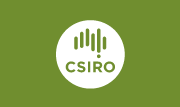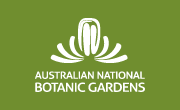Census of the Vascular Plants, Hornworts and Liverworts of the Australian Capital Territory
Version 2.0
(ARCHIVE: see latest version for current information)
12th December 2008
B.J. Lepschi, D.J. Mallinson and D.C.Cargill (editors)
Contributors
L.G.Adams, B.J.Lepschi, D.J.Mallinson (vascular plants excluding Orchidaceae)
D.C.Cargill (hornworts and liverworts)
D.L.Jones (Orchidaceae)
(Note: web pages below are large, ~440 KB each)
Census arranged in family order
Census arranged in genus order
INTRODUCTION
This Census lists the scientific names of the native and naturalised vascular plants (Pinophyta and Magnoliophyta), hornworts (Anthocerophyta) and liverworts (Marchantiophyta) known to occur in the Australian Capital Territory, but excluding the Australian Commonwealth Territory of Jervis Bay on the New South Wales south coast. All records are based on herbarium specimens housed in the Australian National Herbarium (CANB). This version of the Census updates version 1.0 (24 th October 2007), including data on some of the previously unrepresented cryptogamic flora. Future versions of the Census will provide complete coverage of all remaining cryptogamic groups including mosses, lichens, algae, fungi and slime moulds.
As with all censuses, this is a work in progress, and changes to the taxa listed can be expected as new collections and data become available. The census compilers welcome any feedback – please contact us at canbr-info@anbg.gov.au if you have any comments or corrections.
EXPLANATORY TEXT FOR CENSUS FIELDS
Family
Family concepts follow those adopted by the Australian National Herbarium. Pteridophyte families follow Brummit (1992) and McCarthy (1998), with some modifications and Gymnosperm families follow Brummitt (1992), with some modifications. Dicotyledon families mostly follow Cronquist (1981), and are generally in keeping with the arrangement adopted by the Flora of Australia . Monocotyledon families mostly follow Dahlgren, Clifford and Yeo (1985), with some modifications. Hornwort families follow Duff et al. (2007) and liverwort families follow McCarthy (2003).
Plant name
Taxonomic concepts are those adopted by the Australian National Herbarium. For vascular plants these generally follow those recommended by the Australian Plant Census ( see www.anbg.gov.au/chah/apc ) where relevant groups have been treated, but may diverge where a differing view is held by research staff at CANB.
Taxa that have not yet been formally published are listed using the format recommended by the Council of Heads of Australasian Herbaria (CHAH) for informal names, as outlined by Barker (2005).
Authors of plant names and supplementary nomenclatural information are available by clicking on individual plant names, which are directly linked to the Australian Plant Name Index (APNI – see www.anbg.gov.au/cpbr/databases/apni.html ).
Origin
This field indicates whether a taxon is indigenous to Australia and/or the ACT.
For the purposes of this census, the definition of a naturalised plant is similar to that used by Henderson (2002) for the Queensland flora. It is a plant originating outside of the Australian Capital Territory, subsequently introduced to the ACT by or with the help of human intervention, and persisting there unaided by human intervention.
- Blank – indigenous Australian taxon occurring naturally in the ACT
- Exotic [EA] – a taxon introduced to Australia and the ACT (i.e. extra-Australian)
- Exotic [Aust] – an indigenous Australian taxon which does not occur naturally in the ACT. This applies to many native Australian plants which have become naturalised outside their normal ranges (e.g. Acacia baileyana, Melaleuca armillaris subsp. armillaris)
- Indigenous/Exotic [Aust] – an indigenous Australian taxon, represented in the ACT by both naturally occurring and naturalised populations. For example, Passiflora cinnabarina, restricted naturally in the ACT to the Booroomba Rocks area, but also occurring as naturalised plants on Black Mountain, originating from plantings within the Australian National Botanic Gardens
Naturalised Status
This field is blank for taxa occurring naturally in the ACT.
Non-indigenous plants display varying degrees of persistence and naturalisation in the ACT (and indeed Australia). Some, like Echium plantagineum or Hypochoeris radicata, are common and widespread, with large, widely distributed, self-sustaining populations. Others, like Fumaria capreolata or Cosmos bipinnatus are more ephemeral, with scattered small populations which may or may not persist in the longer term. Taxa in the latter category are treated as Doubtfully Naturalised, indicating that the taxon is known to occur in the ACT and is represented by one or more populations, but the extent of naturalisation is uncertain. These taxa have the potential to become ‘truly’ naturalised.
Non-indigenous taxa previously recorded from the ACT, but for which no collections have been made within the past 30 years, are treated as Formerly Naturalised. Similarly, non-indigenous taxa previously recorded for the ACT, but for which no collections have been made within the past 50 years, are no longer considered to be part of the flora of the ACT and are therefore excluded from the main body of the Census. However, as these taxa constitute part of the historical record of the ACT flora, they are listed separately in Appendix 1.
The status of some indigenous Australian taxa occurring in the ACT, for example Maireana microphylla, is unclear. It is uncertain whether populations of these taxa are naturally occurring, or whether they represent introductions. The status of such taxa is indicated as Uncertain.
Voucher
A representative specimen for each taxon recorded from the ACT, cited by the collector/s name and collection number. In the absence of a collection number (sine numero or s.n.), the CANB/CBG accession number is provided. All vouchers are housed in the collection of the Australian National Herbarium (CANB).
Vouchers were selected on the basis of quality of herbarium material and reliability of the determination. In cases where few specimens were available, the best overall was chosen.
ACKNOWLEDGEMENTS
Production of this Census would not be possible without the considerable efforts of the numerous collectors and botanists whose collections comprise part of the Australian National Herbarium, and in turn form the basis of this work. We are grateful to all concerned, and to the many interested individuals who have contributed additional information since the first version of the Census was produced in late 2007. Particular thanks are due to Isobel Crawford, Rosemary Purdie, Sarah Sharp and the staff of ACT Parks, Conservation and Lands for their continued support and interest. The tireless efforts of Murray Fagg in maintaining and managing the Census on the Australian National Botanic Gardens website are also very much appreciated. Colleagues Anna Monro and Greg Whitbread are also thanked for their patient assistance with the more arcane aspects of information management.
REFERENCES
Barker, W.R. (2005). Standardising informal names in Australian publications, Australian Systematic Botany Society Newsletter, 122: 11–12. (http://www.anbg.gov.au/asbs/newsletter/index.html)
Brummit, R.K. (1992). Vascular Plant Families and Genera. ( Royal Botanic Gardens, Kew, UK)
Cronquist, A. (1981). An Integrated System of Classification of Flowering Plants. ( Columbia University Press: New York, USA)
Dahlgren, R.M.T., Clifford, H.T. & Yeo, P.F. (1985). The families of the monocotyledons: structure, evolution, and taxonomy. (Springer-Verlag: New York, USA).
Duff, R.J., Villarreal, J.C., Cargill, D.C. and Renzaglia, K.S. (2007). Progress and challenges toward developing a phylogeny and classification of the hornworts. The Bryologist, 110: 214-243
Henderson , R.J.F. (ed.) (2002). Names and Distribution of Queensland Plants, Algae and Lichens. ( Queensland Herbarium: Toowong, Australia)
McCarthy, P.M. (1998). (ed.). Flora of Australia, vol. 48. (ABRS/CSIRO: Canberra, Australia).
McCarthy, P. (2003). Catalogue of Australian Liverworts and Hornworts. (ABRS: Canberra).
ACT Plant Census on the web
(Note: web pages below are large, ~400 KB each)
Census arranged in family order
Census arranged in genus order
![An Australian Government Initiative [logo]](/images/austgovt_canbr_90px.gif)




